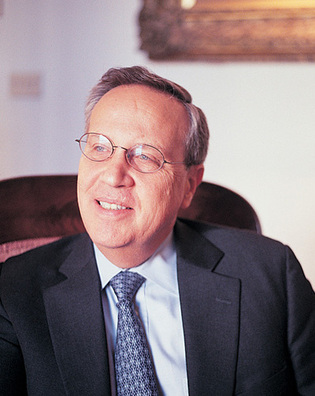 loading
loading
Q&A: Rick LevinSpending more, charging lessAn increase in financial aid.  Mark OstowView full imageY: In January, Yale announced it will spend more from its $22.5 billion endowment. This year you were spending 3.8 percent, or $843 million, and now you've set a new floor of 4.5 percent and a ceiling of 6 percent. Was pressure from Congress a factor? L: We'd been contemplating doing something with our endowment payout the last couple of years -- recognizing that it didn't seem right to be spending only 3.7 or 3.8 percent of the endowment corpus. Then, this fall, the [Senate] Finance Committee started taking the issue quite seriously. Senator Grassley in particular had significant issues about some of the wealthier institutions spending too little when they could afford to give more support to students and families. And some of our own donors said to us, “I don't understand why we're spending so little of my gift.” So we had external constituencies urging us to spend more. And we had an internal concern that we might be short-changing the present generation in favor of the future. Y: The new percentage will affect every fund in the endowment, but the highest-profile change is that college financial aid will rise by $24 million. Does that come just from the endowment? L: Financial aid is not fully endowed. Even with the increased endowment payout, we'll use more unrestricted funds to support financial aid next year. We're raising the level of income below which no parental contribution is required from $45,000 to $60,000. For most families with incomes between $60,000 and $120,000, the parental contribution will be cut by well over 50 percent. Above $120,000, most parental contributions will be cut by a third or 40 percent. Some families, a small number, with income above $200,000 will get aid -- if you have four children in college and $220,000 in income, you would get a significant amount of financial aid. We're also reducing the self-help requirement, the funds students provide for their own support, from $4,400 per year to $2,500 -- seven hours of work-study a week. Other schools are calling this is a “no-loan” policy. And it is a no-loan policy in the sense that you don't need to take out a loan if you work seven hours a week. But if students would prefer to borrow than work, they can still do that. Y: Yale undergraduates leave with an average of $13,000 in debt. Some professional school students have much more debt -- in the nursing school, more than $100,000 on average. Why not allocate financial aid to the professional schools? L: We will. We're going through a budget process this spring to consider how to spend the additional monies coming forward from the endowments of each of the professional schools. In many schools, like drama and art and nursing and forestry, I expect to see very significant improvements in financial aid. Y: More than half of Yale undergraduates get no financial aid, and the new policies won't change that much at all. That speaks to a very high family income -- fewer than 5 percent of U.S. families make $200,000. Do you consider it a problem that Yale's population is disproportionately wealthy? L: There's lots of sociological and economic evidence that children of advantaged circumstances are better academic achievers. They have more resources behind their education, and their parents are more likely to be well educated. When parents have high incomes or a high degree of education, or both, their children are more likely to be high achievers. It's a fact of life. That said, we want to make sure that students with the highest potential for success get the opportunity to come to Yale and get the finest education available. There is no doubt that increases in financial aid since the mid-1960s have broadened the population base at Yale and other institutions. That's a good thing. We have statistical surveys of Yale and peer institutions that show that -- with the exception of students who are very much richer than average -- earned income, 10 or 20 years out of the highest-quality colleges, tends to be the same on average whether you came from a family that was poorer or wealthier than the average of the cohort. It's really quite remarkable. It confirms that schools like Yale are truly engines of social mobility. Y: If there's a downside to Yale extending more financial aid, it's that it puts pressure on other colleges. Not everyone can afford this level of aid. L: People will criticize us if we spend too little and then criticize us if we spend too much. We're trying for the Goldilocks solution, but I'm not sure we will ever have everyone agree that what we're doing is just right. Schools that are less well endowed will do what they can to respond. Cornell, Dartmouth, and Northwestern recently made changes. If these cascade throughout the system, it would be a good thing for American families. Y: What about state schools? Will they come under pressure? L: State institutions are a different story. Since the Reagan years, the great public universities have become increasingly reliant on private contributions. Some are now getting less than 10 percent of their budgets from their state governments. I would hope the current concern about supporting students puts pressure on the state legislatures that have not been coming through. Outstanding state universities have played an important role in the development of the nation. They deserve better support.
The comment period has expired.
|
|